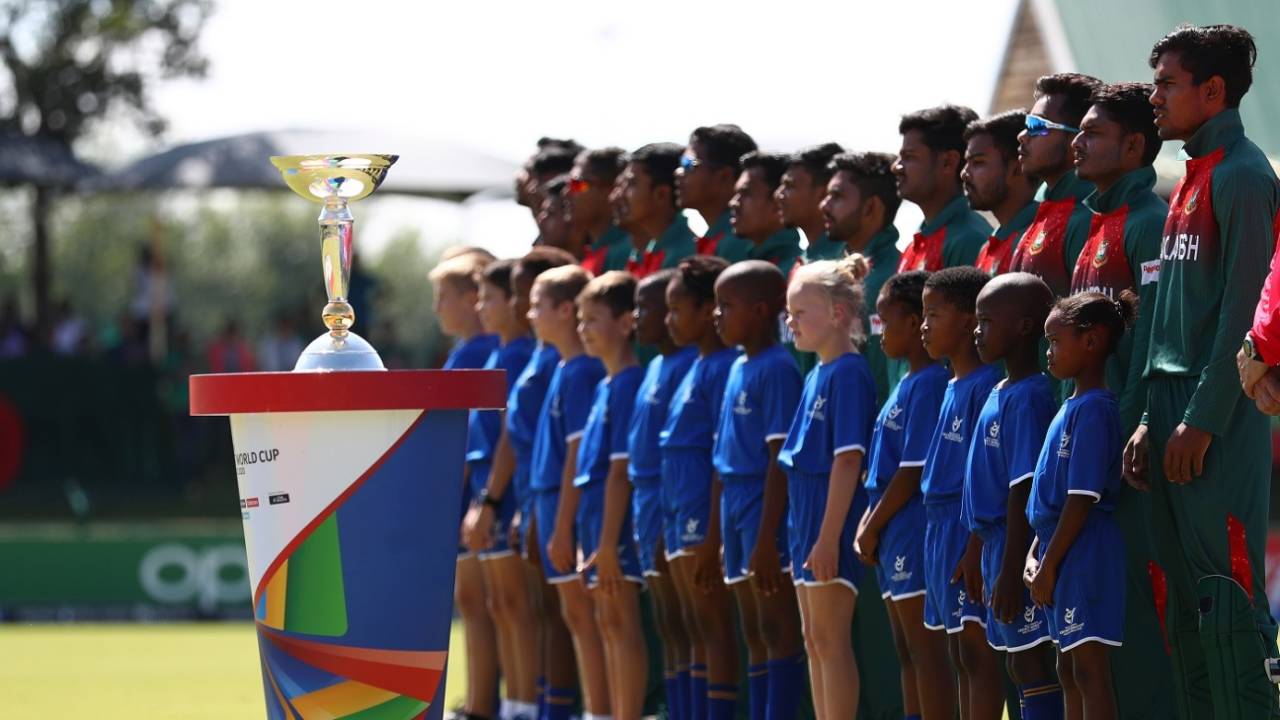Under-19 World Cup takeaways: Asian dominance and spin to win
Centuries were fewer and 230 v 230 a norm at forgotten venues that threw up a feast
Sreshth Shah in Potchefstroom
10-Feb-2020
ICC via Getty
Over the last three weeks, the Under-19 World Cup threw up a number of trends. While there were no major upsets, the tournament elicited a number of talking points, which we examine.
Spin rules in traditionally fast-bowling centres
Eight of the top 11 wicket-takers at the World Cup were spinners. Four - Rakibul Hasan, Aryan Lakra, Ashmead Nedd and Lewis Goldsworthy - were slow left-arm tweakers, three - Ravi Bishnoi, Shafiqullah Ghafari and Tanveer Sangha - were legspinners while Hamidullah Qadri was an offspinner.
While some of them were frontline options, who have or will be regulars for their first-class or franchise setups at home, many were part-timers. It showed that spin continues to a potent wicket-taking option in the white-ball format, and that to win matches, wickets in the middle overs continue to be paramount. The worrying factor for all teams, however, was the gap in skill and temperament that existed among batsmen facing spin bowling.

ICC via Getty
Learn from the Asian sides
The Asian sides brushed aside any notion of being slow starters in conditions traditionally known to assist swing and seam movement.
Bangladesh toured around the world before coming here, Pakistan thumped the hosts 7-0 in a series before the World Cup, India played a bilateral and a quadrangular in South Africa through December and Afghanistan showed that honing your strengths will reap rewards irrespective of conditions. Sri Lanka were the only team that underachieved, but that goes down, in part, to a tough group that had India and New Zealand.
Australia played a fifth of the games that India played between the 2018 edition and now, England played a third while this West Indies squad began playing as a team only from mid-2019. The difference showed in the games and these teams, too, now know what they must do going into 2022.
Even bat and ball contests
At the 2018 edition, there were nine scores above 300, including two 400-plus totals. But at the 2020 edition, there were only six - including five against Japan, Nigeria, Scotland and Canada. The only Test team to concede 300 was West Indies, after they were knocked out from World Cup contention. Scores between 220 and 250 were the norm and they made for fascinating contests.
There were fewer centuries, though. In 2018, there were 25 but this time there were only eight, of which five game against Japan, Nigeria and Canada. Whether that's the fallout from the exposure of these teenagers to T20 cricket, or whether the batsmen were not prepared to play long is something batting coaches will do well to examine.

ICC via Getty
The ICC's efforts are worth it
For Nigeria and Japan, this tournament was a once-in-a-lifetime opportunity to show the world the giant strides they've taken at the grassroots. They both played six games, finishing 15th and 16th respectively, but it wasn't about where they finished as much as it was about them turning up and showing they were here to learn.
An extensive qualifying process to get here meant their participation was no fluke, although Japan did get in because of Papua New Guinea's disqualification. It also inspires teams that have never been on the World Cup roadmap to plan and prepare, showing them that a focused effort behind the scenes does pay off in the long run.
Cricket returns to forgotten venues
Playing games in Kimberley, Bloemfontein, Benoni and (four venues at) Potchefstroom took the game to places which have slowly lost their place in South Africa's international cricketing calendar. The cricket-starved fans at these grounds came out in large numbers, even as South Africa and England's senior teams tussled at the big venues.
Schoolchildren were invited to all the games, entry was free for the general public, targeted radio campaigns brought people in while towards the knockouts, flyers distributed among the expat Asian population ensured the atmosphere for each game did justice to the occasion.
Sreshth Shah is a sub-editor at ESPNcricinfo
